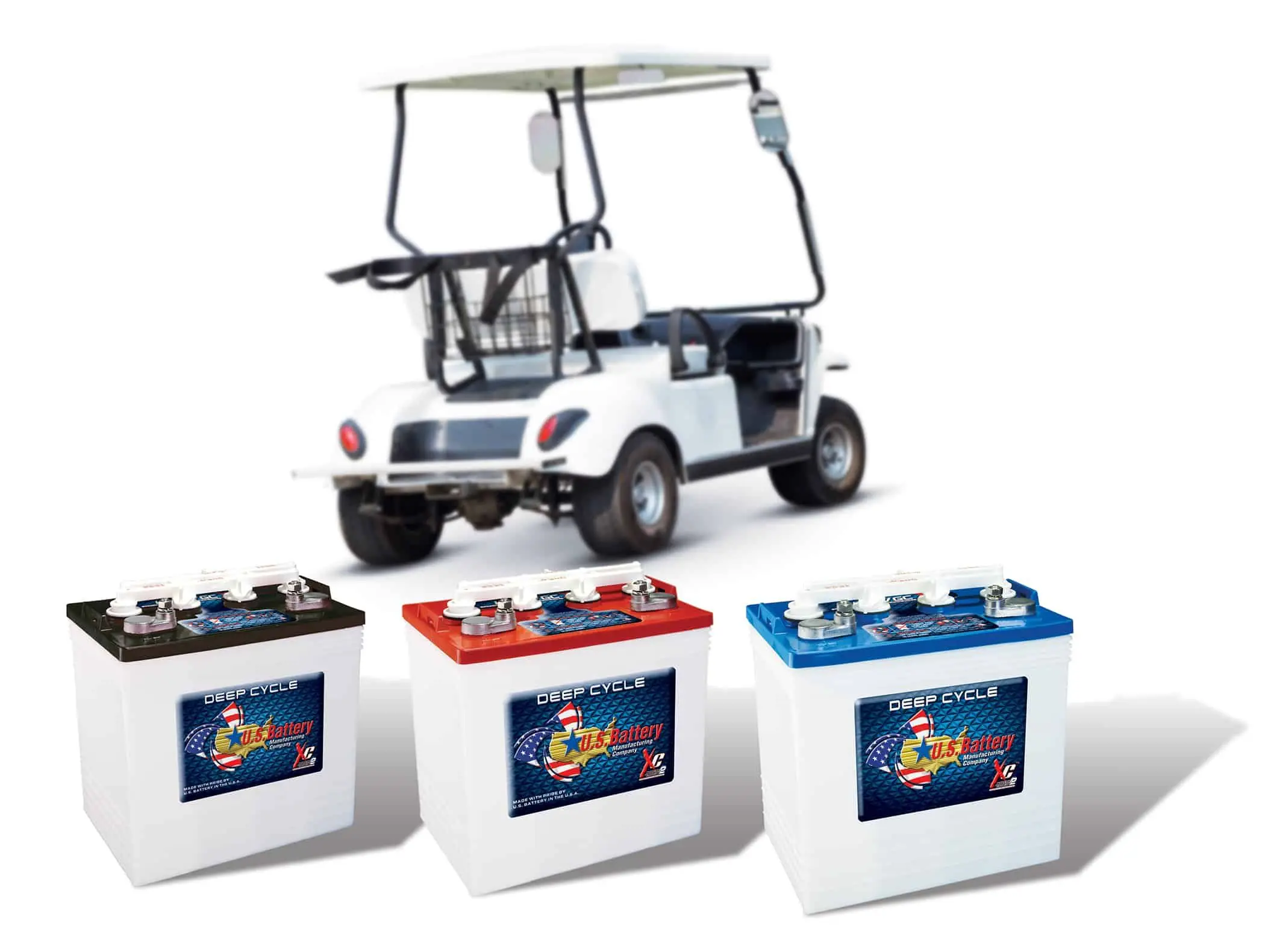
How to Choose the Best Golf Cart Battery?
- Michael
- Golf Cart Battery
In the world of golf carts, having the best golf cart battery is crucial for ensuring a smooth and uninterrupted ride on the greens. Whether you’re an avid golfer or managing a fleet of golf carts for a business, the importance of a reliable power source cannot be overstated. Here, we’ll delve into the key factors to consider when selecting the best batteries for golf carts, ensuring you make an informed decision that aligns with your specific needs.
Understanding Your Golf Cart's Power Requirements
Before diving into the myriad options available, it’s essential to understand the power requirements of your golf cart. Different carts have varying energy needs, and selecting a battery that matches these requirements is the first step toward optimal performance. Take note of your cart’s voltage and amperage specifications, which are typically outlined in the user manual or on the manufacturer’s website.
Factors to Consider When Choosing the Best Golf Cart Battery
1. Battery Type: Flooded Lead-Acid, AGM, or Lithium?
Flooded Lead-Acid Batteries:
Flooded lead-acid batteries are the traditional choice for golf carts. They are cost-effective but require regular maintenance, including water refilling and cleaning of terminals.
AGM (Absorbent Glass Mat) Batteries:
AGM batteries offer a maintenance-free alternative. They are spill-proof, have a longer lifespan, and are generally more reliable, making them an excellent choice for those seeking convenience and durability.
Lithium Batteries:
Lithium batteries, while more expensive, provide exceptional performance. They are lightweight, have a longer lifespan than traditional options, and offer consistent power output throughout their cycle. Consider the upfront cost against the long-term benefits when contemplating lithium batteries.
2. Battery Voltage: Matching Your Golf Cart's Requirements
It’s essential to match the battery voltage with your golf cart’s specifications. Common voltages include 6V, 8V, and 12V, and most electric carts operate within a 36 to 48-volt range. For instance, a 36-volt cart typically uses six 6-volt batteries, while a 48-volt cart may have six 8-volt or four 12-volt batteries. In certain instances, 72-volt golf carts are available. These represent the most powerful voltage choice, tailored for exceptional performance or specific uses. Their infrequency is attributed to the increased expenses and intricate design involved.
Determining Your Cart's Voltage
To determine your golf cart’s voltage, you can check the manufacturer’s specifications or inspect the battery compartment. Most 36-volt carts have six batteries, while most 48-volt carts have six 8-volt batteries or four 12-volt batteries.
Impact of Voltage on Performance
To determine your golf cart’s voltage, you can check the manufacturer’s specifications or inspect the battery compartment. Most 36-volt carts have six batteries, while most 48-volt carts have six 8-volt batteries or four 12-volt batteries.
Voltage and Battery Lifespan
To determine your golf cart’s voltage, you can check the manufacturer’s specifications or inspect the battery compartment. Most 36-volt carts have six batteries, while most 48-volt carts have six 8-volt batteries or four 12-volt batteries.
- Note: Insufficient voltage can indicate a problem with the battery, the charging system, or other electrical components. If you notice a drop in voltage, it's best to have your cart inspected by a qualified technician.
3. Amp-Hour (Ah) Rating: Assessing Capacity
The best battery for a golf cart should have an appropriate Amp-Hour rating, indicating its capacity to deliver a consistent flow of power over time. Assess your usage patterns and select a battery with an Amp-Hour rating that meets or exceeds your requirements for extended operation.The following is an example of how to select a battery based on amp-hour rating:
1. Determine the cart's average power consumption
The average power consumption of a golf cart can vary depending on factors such as speed, load, and terrain. For example, a 36-volt golf cart that is used for moderate-duty applications, such as carrying passengers and cargo on a golf course, let’s assume the cart consumes an average of 50 amps.
2. Calculate the required amp-hour rating
To determine the required amp-hour rating, divide the average power consumption by the desired run time. For example, if you want your cart to run for 4 hours without recharging, you would need a battery with an amp-hour rating of at least 200 (50 amps / 4 hours = 25 amp-hours).
3. Choose a battery with a higher amp-hour rating
To ensure your cart has enough power for unexpected demands and to extend its lifespan, it is recommended to choose a battery with a higher amp-hour rating than the minimum required. A good choice would be a battery with an amp-hour rating of 225 or higher.
4. Considering Your Golf Cart's Usage
Your golf cart’s usage will also affect the type of battery you need. If you use your golf cart primarily on flat terrain and for short rides, you can get by with a smaller battery. However, if you use your golf cart on hilly terrain or for longer rides, you will need a larger battery with a higher Ah rating. Consider factors such as:
Frequency
How often do you use your golf cart? If you use it daily or several times a week, you will need a battery with a higher Ah rating to accommodate your frequent use.
Duration
How long are your typical golf cart rides? If you typically take short rides around the neighborhood, you can get by with a smaller battery. However, if you take longer rides, especially on hilly terrain, you will need a larger battery with a higher Ah rating to provide enough power for longer periods.
Conditions
What kind of terrain do you often travel on? If you mostly operate your golf cart on flat, smooth surfaces, you can get by with a smaller battery. However, if you frequently encounter hills, rough terrain, or steep inclines, you will need a larger battery with a higher Ah rating to provide the power needed to tackle those obstacles.
5. Assessing Your Budget
- Golf cart batteries can range in price from a few hundred dollars to several thousand dollars. The type of battery, the size of the battery, and the brand name will all affect the price. Make sure to factor in the cost of the battery when you are budgeting for your golf cart purchase. Here are some factors to consider when assessing your budget:
- The type of battery: Flooded lead-acid (FLA) batteries are the most affordable option, while lithium-ion batteries are more expensive.
- The size of the battery: Larger batteries with higher Ah ratings will typically cost more than smaller batteries with lower Ah ratings.
- The brand name: Brand-name batteries from reputable manufacturers may be more expensive than generic or no-name batteries.
- The warranty: Batteries with longer warranties may cost more upfront, but they can save you money in the long run if you need to replace them less often.

Unlock Your Golf Cart's Full Potential with the Perfect Battery
Choosing the right golf cart battery is crucial for its performance and lifespan. By carefully considering factors like battery type, voltage, Amp-Hour rating, and brand reputation, you can make an informed decision that will benefit you in the long run. Investing in high-quality batteries ensures your golf cart operates efficiently and reliably. Contact our expert golf cart repair team in Austin, Texas, and we’ll help you select the best battery for your golf cart, maximizing its performance and endurance.
Frequently Asked Questions
What is the average lifespan of a golf cart battery?
The lifespan varies, but with proper care, a golf cart battery can last between 4 to 6 years.
Can I replace my golf cart battery myself?
While basic maintenance can be done, replacing the battery is best left to professionals for proper installation and safety.
Are lithium-ion batteries worth the higher cost?
While basic maintenance can be done, replacing the battery is best left to professionals for proper installation and safety.
Can I mix different types of batteries in my golf cart?
While basic maintenance can be done, replacing the battery is best left to professionals for proper installation and safety.
Can I use a regular car battery for my golf cart?
While basic maintenance can be done, replacing the battery is best left to professionals for proper installation and safety.
What are the best golf cart batteries?
While basic maintenance can be done, replacing the battery is best left to professionals for proper installation and safety.







